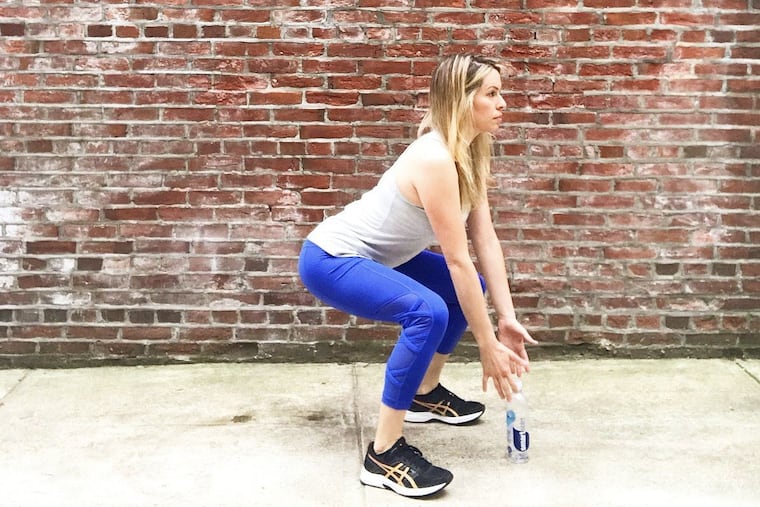4 simple steps to protect your back when lifting or moving heavy objects
Retrain your brain to safely lift or move heavy objects with these simple steps.

Many of us unknowingly jeopardize the safety and stability of our back by engaging in hazardous habits that place pressure on the spine and surrounding muscles. Remember that time you awkwardly hoisted that heavy suitcase into overhead storage, or when you forced that formidably full dresser across your bedroom floor? Those are the sort of back-breaking behaviors that make back pain a leading cause of disability in the United States.
When you’re on the go, or moving too quickly through an exercise, it’s easy to forget and forgo proper lifting form. But by practicing core and back strengthening exercises, as well as learning the correct techniques for moving objects, you’re far less likely to sustain a back-related injury.
Retrain your brain to safely lift or move heavy objects with these simple steps:
Step 1. Place a light object, like a bottle of water, on the floor in front of you.
Step 2. Step your feet out until they are slightly wider than shoulder-width apart. A wide stance improves your support base and balance when lifting an object. Once your feet are in place, check your breathing. It’s common to hold your breath and brace when moving heavy equipment. But this seemingly innocent habit reduces the flow of oxygen-rich blood to your brain, which can cause a spike in blood pressure and make you feel dizzy or fatigued. Exhale when lifting weight and inhale when lowering it.
Step 3. It’s common to lift objects from your lower back, rather than from your legs. Squats are a valuable exercise because they train your brain to hinge back at your hips, not forward at your waist, as so many do. When bending down to pick up your water bottle, implement the same guidelines used while squatting:
Keep your body weight in your heels as you hinge back at your hips as if sitting down in a chair.
Gaze forward to avoid rounding your back or hunching your shoulders forward.
Hold the object close to your chest as you slowly and smoothly push through your heels to lift your body. When your arms are extended too far away from your body while carrying a heavy load, the lower back muscles brace for support. But your legs consist of some of the largest, strongest muscles in your body; let them carry the weight.
Step 4. When holding a heavy object, always use your feet to change direction, not your waist.
When lifting heavier items, like a big box filled with accessories, always recruit a friend for help. Remember that the key to a healthy back is to prevent pain before it starts.
Ashley Blake Greenblatt, ACE-CPT, is a certified personal trainer and wellness coach. To learn more about her virtual training program, visit ashleyblakefitness.com.